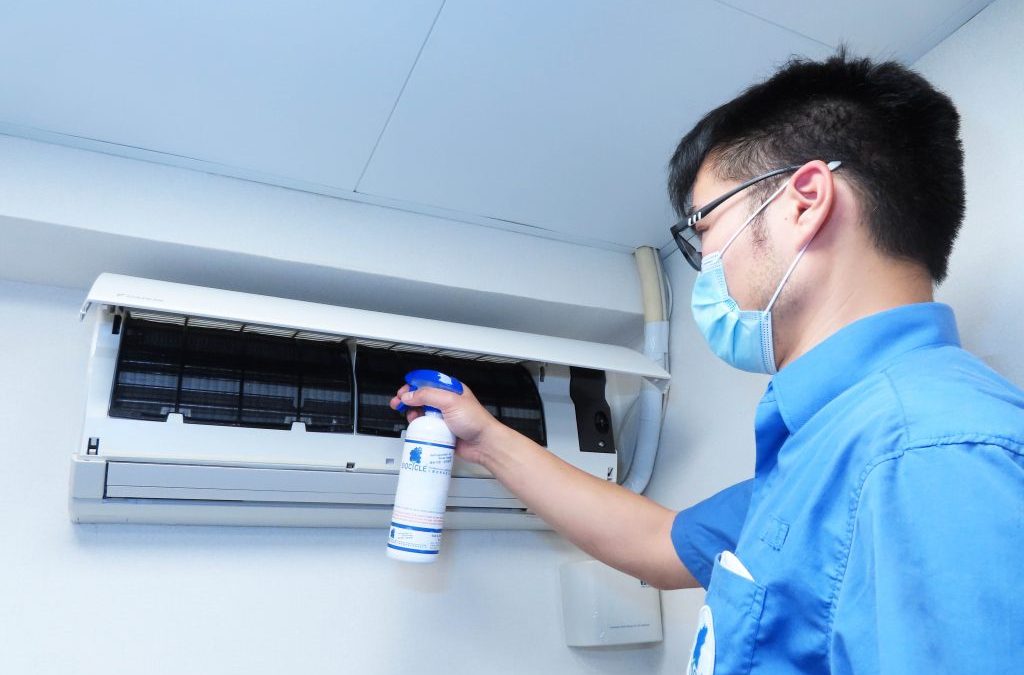This article will provide a detailed explanation of what an aircon condenser is, how it works, and the different types of aircon condensers.
Aircon Condenser: Overview
An aircon condenser is part of an HVAC system that converts hot refrigerant gas into a cool liquid. The condenser is typically located in the outdoor unit of the air conditioning system and works in conjunction with the compressor, expansion device, and evaporator to transfer heat and cool the indoor air.
The condenser is responsible for releasing the heat absorbed by the refrigerant during the cooling process. The refrigerant is circulated through the aircon condenser by a compressor, which raises the pressure and temperature of the refrigerant.
Working of Condenser:
The aircon condenser works by transferring heat from the refrigerant to the air passing through the condenser coils. The refrigerant enters the aircon condenser as a hot gas, and as it passes through the condenser coils, it gives off heat to the surrounding air. The condenser coils are designed to maximize the surface area available for heat transfer, usually by using fins that increase the surface area of the coils.
The aircon condenser is typically powered by electricity and uses a compressor to circulate the refrigerant through the system. The compressor raises the pressure and temperature of the refrigerant, which allows it to absorb more heat from the indoor air. As the refrigerant enters the aircon condenser, it gives off heat to the surrounding air, causing the refrigerant to cool and condense back into a liquid.
Once the refrigerant has been condensed back into a liquid, it flows through an expansion valve, which reduces the pressure and temperature of the refrigerant. The refrigerant then flows back to the evaporator coil, where it absorbs heat from the indoor air, and the process starts again.
Types of Aircon Condensers:
There are different types of condensers used in air conditioning systems, and below is provided a detailed explanation of these types, their working principles, and their applications.
1. Air-Cooled Condenser:
An air-cooled condenser is a type of condenser that uses air as the cooling medium to remove heat from the refrigerant. It consists of a coil of tubes that contain the refrigerant, and fins that increase the surface area of the coil to enhance heat transfer. The air-cooled condenser is usually located outside the building and is exposed to outdoor air.
The working principle of an air-cooled condenser is straightforward. The hot refrigerant gas flows through the tubes of the coil, and as it passes through the fins, heat is transferred to the surrounding air. The air-cooled condenser is suitable for small to medium-sized air conditioning systems and is relatively easy to install and maintain.
2. Water-Cooled Condenser
A water-cooled condenser is a type of condenser that uses water as the cooling medium to remove heat from the refrigerant. It consists of a shell-and-tube heat exchanger where the refrigerant flows through the tubes, and water flows through the shell. The water-cooled condenser is usually located inside the building and requires a continuous supply of water.
The working principle of a water-cooled condenser is similar to that of an air-cooled condenser. The hot refrigerant gas flows through the tubes, and as it passes through the shell, heat is transferred to the water.
The water-cooled condenser is suitable for larger air conditioning systems and is more energy-efficient than the air-cooled condenser. However, it is more complex to install and maintain.
3. Evaporative Condenser;
An evaporative condenser is a type of condenser that combines the principles of an air-cooled condenser and a cooling tower. It uses water as the cooling medium, which is sprayed onto a coil of tubes containing the refrigerant. The water evaporates, absorbing heat from the refrigerant, and the cooled water is then recirculated.
The working principle of an evaporative condenser is similar to that of a water-cooled condenser. However, instead of using a shell-and-tube heat exchanger, it uses a coil of tubes, and the water is sprayed onto the tubes.
The evaporative condenser is suitable for large air conditioning systems and is more energy-efficient than the water-cooled condenser. However, it requires a continuous supply of water and is more complex to install and maintain.
5. Fin-and-Tube Condenser:
This is a traditional type of condenser that consists of a coil or series of coils with fins to enhance heat transfer and a fan or fans that force ambient air over the coils.
The refrigerant releases heat to the surrounding air as it flows through the coils, causing it to condense and change from a high-pressure vapor to a high-pressure liquid. Fin-and-tube condensers are widely used in various types of air conditioning systems, from residential to commercial and industrial applications.
6. Hybrid Condenser:
This type of condenser combines different types of condensers, such as air-cooled and evaporative condensers, to optimize heat rejection and increase energy efficiency.
In a hybrid condenser, the refrigerant may first pass through an air-cooled section where it releases some heat to the ambient air, and then through an evaporative section where it further cools and condenses by coming into contact with water or a water-based solution. This combination of air and water cooling can provide improved performance in certain environmental conditions.
Aircon can face different condenser problems and it is important to resolve them as soon as possible with the help of a professional. Socool is a reputable air conditioning company with years of experience in providing high-quality air conditioning services to customers in Singapore.
When it comes to condenser problems, Socool has a team of expert technicians who are trained to diagnose and repair all types of condenser issues. They use state-of-the-art equipment and advanced techniques to ensure that your aircon system is running smoothly and efficiently.


